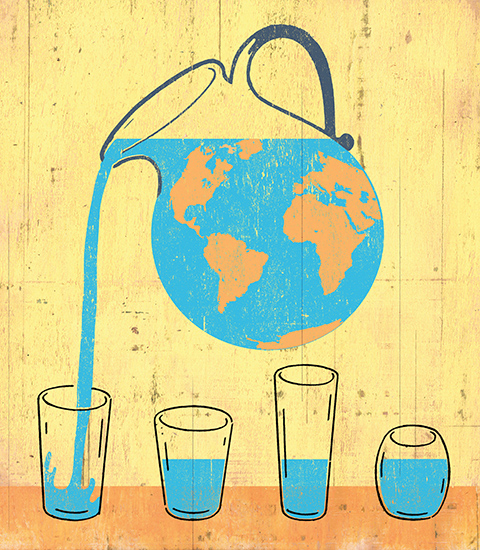-
Economic Solutions to Water Conflicts
The demand for water is significantly outpacing population growth.

At the same time, environmental constraints, climate change, groundwater depletion, and pollution are limiting the availability of water for consumptive use. Most water in the United States is either subsidized or not priced, sending a false signal of resource abundance. Existing water management systems rely on rationing to reduce demand when supplies are scarce – an approach to allocation that provides few incentives for conservation and imposes high costs when supplies are disrupted.
Water disputes, such as the Georgia-Alabama-Florida Tri-State lawsuits and the California Delta smelt conflicts, are increasing due to water scarcity and inflexible water management. Population growth and industrial development, including increased domestic energy production and the adoption of water-intensive clean-coal technologies, will further exacerbate these conflicts. Well-designed water markets offer hope for conflict resolution, as they provide a more flexible and reliable means of resource allocation.
Despite the promise of water markets, potential third-party impacts – such as the introduction of pollutants from water transfers – are a concern. This issue has come to the forefront in a recent lawsuit brought against the US Environmental Protection Agency (EPA) over its promulgation of the Clean Water Act National Pollutant Discharge Elimination System (NPDES) Water Transfer Rule. The EPA proposed the Rule in June 2008 to clarify the decades-old practice of not requiring NPDES permits for water transfers. The lawsuit illuminates several legal, policy, and economic issues related to water pollution and water transfer regulations. While regulatory oversight is necessary to protect third parties and environmental values, excessive, inflexible, or ambiguous regulation that prevents water transfers will limit options for resolving water conflicts.
Developing efficient solutions to water conflicts will require expertise in environmental and natural resource economics – including valuation of water resources and related infrastructure, calculation of economic damages related to water pollution and loss of wetlands habitat, cost-benefit analysis, market design, water conservation policies, and water issues related to climate change. ■
This feature appeared in the Fall/Winter 2008 issue of Forum.
